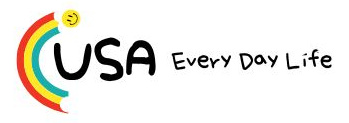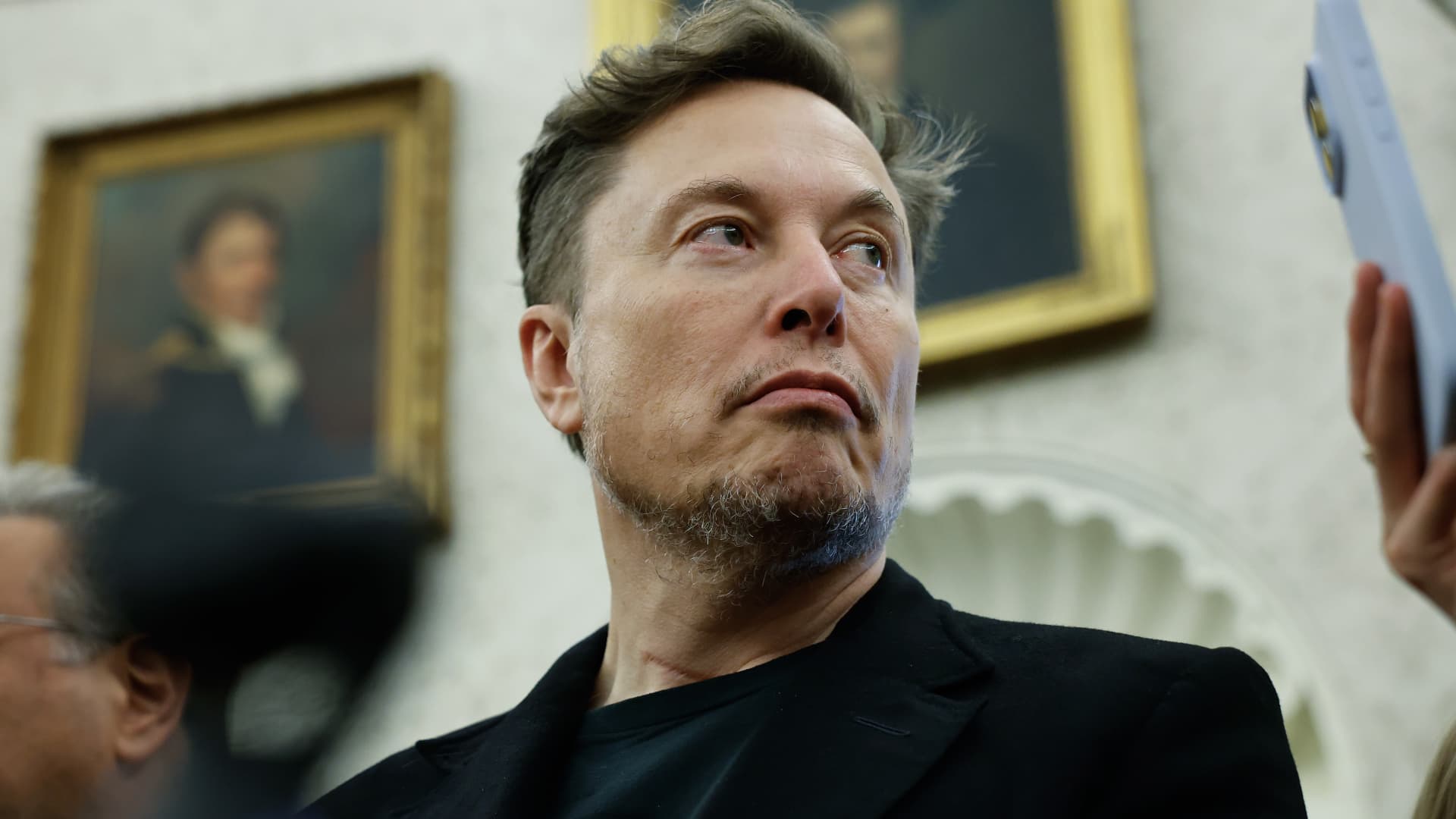Elon Musk listens as reporters ask U.S. President Donald Trump and South Africa President Cyril Ramaphosa questions during a press availability in the Oval Office at the White House on May 21, 2025 in Washington, DC.
Chip Somodevilla | Getty Images
There was a lot missing from Tesla’s third-quarter earnings call.
CEO Elon Musk said nothing about demand for the company’s electric vehicles after a key federal tax credit expired last month. There was no mention of the Cybertruck or the impact of tariffs on auto parts. Investors got no sign for how the fourth quarter is shaping up.
That all helps explain why the stock sank almost 4% in extended trading.
Rather than focus on sales, margins and earnings (which missed estimates), Musk took a familiar path, making bold promises and laying out his futuristic vision for the business. It starts with robotaxis, and Musk’s view that skeptical investors and much of the public fail to see what’s coming.
“People just don’t don’t quite appreciate the degree to which this will take off — where it’s honestly — it’s going to be like a shock wave,” Musk said in his opening remarks. “We have millions of cars out there that, with a software update, become full self-driving cars and, you know, we’re making a couple million a year.”
Musk has for years promised that Tesla’s EVs will be able to do work for their owners, making them money while they sleep by ferrying passengers or goods around without a driver. But while Alphabet’s Waymo is aggressively entering new markets with its commercial robotaxi service, and Baidu’s Apollo Go is taking off in China and elsewhere, Tesla is still limited to a few pilot projects.
During Tesla’s prior earnings call in July, Musk predicted that the company would have autonomous ride hailing available to “probably half the population of The U.S. by the end of the year.” The company still doesn’t produce or sell cars that are safe to use without a human ready to steer or brake at all times.

On Wednesday, Musk said Tesla would have its robotaxi service operating without human drivers in Austin by the end of the year and that it would be running in eight to 10 cities by the close of 2025, at least with drivers on board.
As for its current fleet of cars, finance chief Vaibhav Taneja said on the call that the customer base for FSD Supervised, Tesla’s partially automated driving system, “is still small,” with 12% of users paying for the system. Taneja didn’t offer an average sale price that subscribers are paying after Tesla ran a number of promotions to drive uptake.
Tesla said in its investor deck that FSD revenue was lower than in the year-ago period, when the figure was $326 million. That means FSD accounted for less than 2% of total revenue in the latest quarter.
After robotaxis, Musk turned to humanoid robots, repeating his prediction that Optimus has the “potential to be the biggest product of all time.”
Optimus is Tesla’s bipedal humanoid robot that’s in development but not yet commercially deployed. Musk has previously said the robots will be so sophisticated that they can serve as factory workers or babysitters.
Now he’s raising the bar.
“Optimus will be an incredible surgeon,” Musk said on Wednesday. He said that with Optimus and self driving, “you can actually create a world where there is no poverty, where everyone has access to the finest medical care.”
Musk said Tesla will likely demo a new version of Optimus, which he called V3, in the first quarter of 2026.
At the end of the call, Musk kept the focus on robots but combined it with another topic of importance: his pay package.
A Tesla Optimus robot scoops popcorn and waves at attendees during the opening of the Tesla Diner and drive-in restaurant and supercharger on Santa Monica Blvd. in the Hollywood neighborhood of Los Angeles on July 21, 2025.
Patrick T. Fallon | Afp | Getty Images
In September, Tesla introduced a new pay plan that could be worth $1 trillion and increase Musk’s stake in the company by 12%. Tesla will hold its annual shareholder meeting in early November, when the plan will be up for a vote.
“If we build this robot army, do I have at least a strong influence over that robot army?” Musk said on the call. “I don’t feel comfortable building that robot army if I don’t have at least a strong influence.”
He also took aim at proxy advisors Institutional Shareholder Services and Glass Lewis after the firms recommended shareholders vote against approving his new pay plan.
Musk said ISS and Glass Lewis “have no freaking clue,” and described them as “corporate terrorists.”
Representatives from the two firms didn’t immediately respond to requests for comment.
In the meantime, Tesla still relies on auto sales for the vast majority of its revenue. And while revenue increased 12% in the third quarter from a year earlier, that followed two straight year-over-year declines, and analysts expect a drop of about 2% in the fourth quarter.
Absent from the call was any discussion of what Tesla may be doing in the near term to restore consumer enthusiasm.
Tesla’s brand ranking declined to the 25th spot on the Interbrand 2025 Best Global Brands list out earlier this month, from 12th in 2024. The report said that “Tesla was once the main disruptive force in the automotive industry,” but Musk’s political activities along with a lack of new products “has led to concerns about Tesla’s ability to sustain high margins.”
Through Tesla’s online forum, investors submitted questions about new products in the pipeline. But on the call, investor relations lead Travis Axelrod twice refused to read them.
“This is not the appropriate venue to cover that,” he said.






